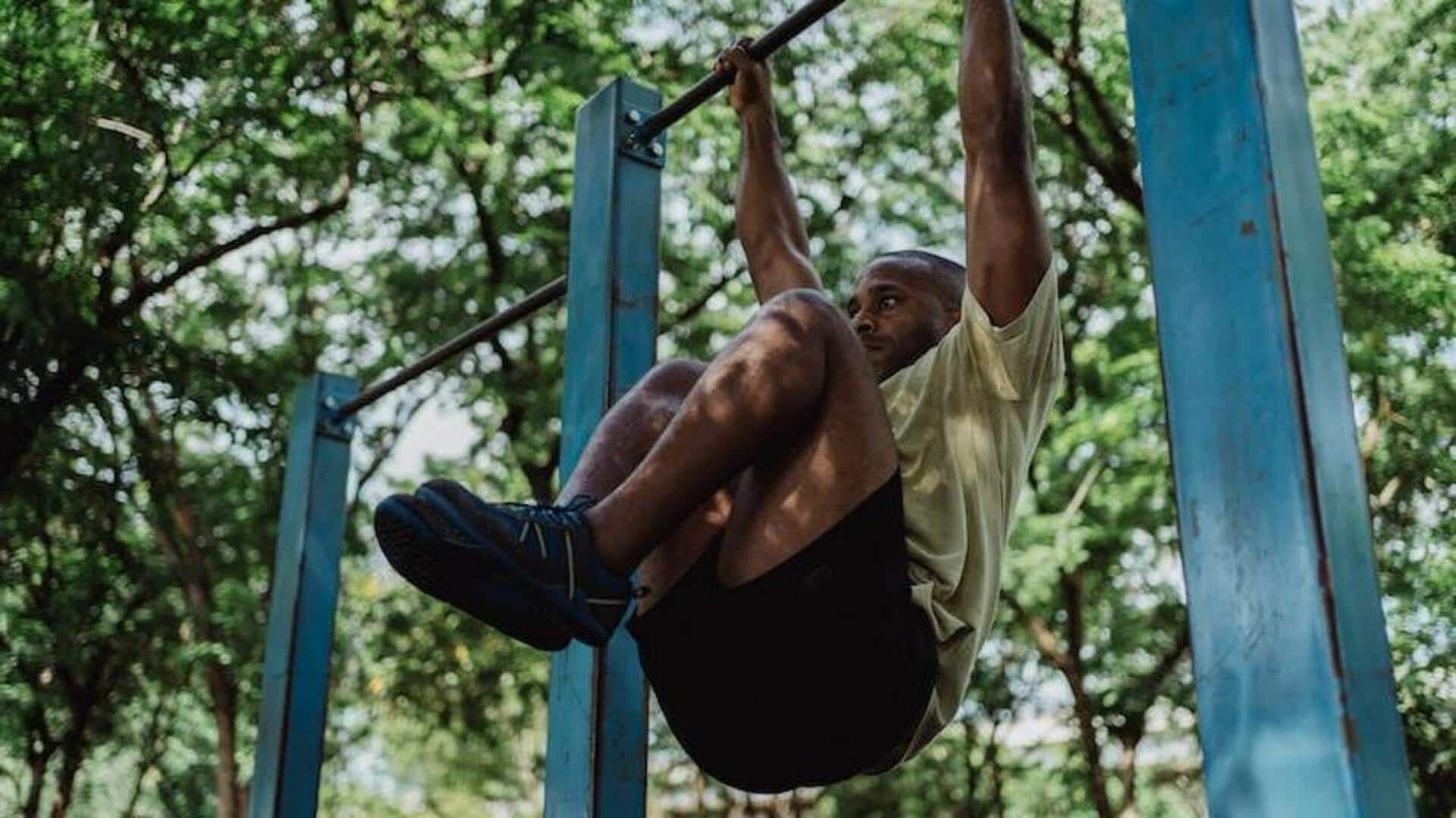
Exercises using pull-up bars that are fun and easy
What's the story
Besides losing weight and building muscles, another top reason why most of us enjoy exercising is that we get to try a diverse spread of activities each day. And with gym equipment like pull-up bars, which can be used in a plethora of ways, workouts become all the more fun and engaging. Today, let's familiarize you with five interesting pull-up bar exercises.
Exercise 1
L-sit pull-ups
Begin by placing your palms down around a pull-up bar. Once done, hang. Now as you are hanging, raise your legs and stretch them frontward, such that they are parallel to the ground and you make an 'L' shape. Sticking to that position, pull yourself up and then back down. This exercise helps you tone your lats, abdomen, shoulders, forearms, glutes, hamstrings, and hips.
Exercise 2
Batwing chin up
This exercise has advantages for biceps, triceps, and lats. Stand straight and hold the pull-up bar close. Your palms should be facing you and not the ceiling. Now pull yourself up until your chin is at the same level as the bar. Make sure your elbows are close to your body. Hold for five seconds, go down, and then pull back again.
Exercise 3
Windscreen wipers
This exercise could be challenging but you can easily ace it with regular practice. With your palms facing you, grip the bar and gently pull yourself up. Now as you hold your arms and torso steady and stable, first swing both your legs toward the right and then to the left, as far as possible. Oscillate between left and right as desired.
Exercise 4
Negative pull-ups
Get a chair and stand on it. Hold the pull-up bar with a shoulder-width grip. Make sure your palms are facing you. Keep your grip tight and torso stable, step off the chair and pull yourself up until your arms are fully extended. This improves the strength of your grips, improves your body's overall control and coordination, and tones multiple muscle groups at once.
Exercise 5
Behind neck pull-up
The first step is to grab the bar with a wide grip and your palms facing down. Now lean your torso just a little and pull yourself up until the back of your neck reaches its level. Keep the exercise slow-paced to avoid any injuries. Slowly return to the start and repeat as many times as you can.